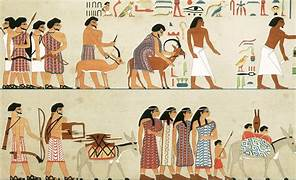
HEADLINES / 3 year ago / March 29, 2019
Indus valley civilisation
The Indus Valley civilization along the river Indus in north-western India (3000 B.C.E. and 1500 B.C.E.) was the largest and the most advanced in the ancient world, with technological sophistication. It extended from modern-day northeast Afghanistan to Pakistan and northwest India. It consisted of more than 1500 settlements that included large cities and small towns.
Houses
Town planning in the Indus Valley Civilisation was quite different from that of Egypt or Mesopotamia. A grid system was used for town planning and both Mohenjodaro and Harappa had citadels, which is probably where the ruling class lived. Another prominent feature of this civilisation was the use of burned bricks for construction. Every house had more than 2 rooms and contained kitchens, wells and an inner courtyard. As well as that, there were no windows along the ground floor, which shows the privacy concern that the citizens had. Furthermore, every house had its toilet and drains connected through the wall to street drains. Additionally, the citizens of the Indus Valley Civilisation were known for maintaining good personal hygiene. Most houses had their own bathrooms. This is discussed in more detail below:
Personal Hygiene
Indus people were fully aware of how important sanitation was and therefore the indus valley civilisation had one of the world’s first water irrigation systems. Additionally, wells were located strategically throughout the cities, to ensure that all people had access to clean and fresh water. Individual homes got water from wells . Terracotta pipes were used to bring the waste from the bathroom (on the top floors) to street-level drains. As well as that, central baths were designed to prevent water leakage.
City life
Artifacts suggest that farmers brought their grain to the city to trade or to put it in warehouses, while labourers dug wells and collected trash from bins. Many artifacts suggest that trade was very important for Indus people. There has been a lot of evidence of seals being used, for example, to mark who the goods belonged to. The barter system carried out trade, which had no medium of exchange(ie, money). Most trade was in stone or other metals. Trade was also carried out with foreign lands, for example, in Mesopotamia, harappan seals have been found. As well as that, they carried out significant trade in expensive gemstones. This has been suggested by the fact that in Mesopotamia, evidence was found for a land known as “melluha” which had lapis lazuli, a blue stone. This was important because it probably added to the reputation of the ruling class(that is, if there was any).
Arts and Crafts

Many arts and crafts found in the Indus Valley civilisation suggest that animals were an important part of their lives as they were often seen in the crafts. Most sculptures have been destroyed or heavily damaged, however, most of them are images of men or women worshipping. One of the best-known figures is a copper figure of a dancing girl. Copper was taken from Rajasthan, while tin was taken from Afghanistan. Another famous piece of work found is of a man made of soapstone, suggesting that he might have been a king or a priest/scholar. He could also have been a wealthy man. Therefore, historians do not yet know who governed the Indus Valley civilisation- was it local oligarchs, a central government or priests?